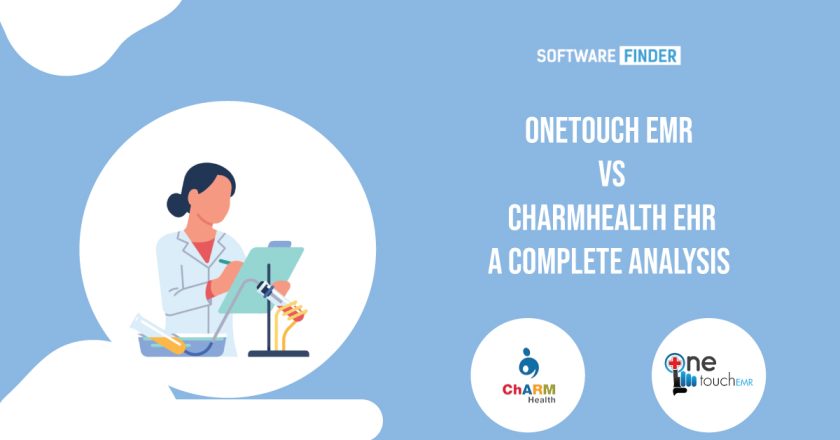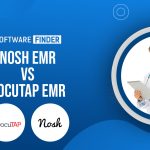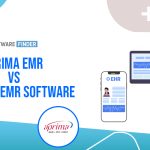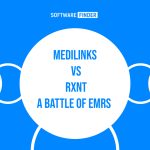Introduction:
In the ever-evolving landscape of healthcare, electronic medical records (EMRs) and electronic health records (EHRs) have become vital tools for healthcare providers. They streamline patient information management, improve efficiency, and enhance the quality of care. This report aims to compare two popular EMR/EHR systems: OneTouch EMR and ChARMHealth EHR. By evaluating their key features, functionalities, user experience, and customer support, healthcare professionals can make informed decisions regarding their EMR/EHR needs.
Overview of OneTouch EMR:
OneTouch EMR is an electronic medical records system designed to meet the needs of small to medium-sized practices. It offers comprehensive features such as patient scheduling, documentation management, e-prescribing, and billing functionalities. The system is known for its user-friendly interface and ease of use, allowing healthcare providers to quickly adapt to the software.
Overview of ChARMHealth EHR:
ChARMHealth EHR, on the other hand, is a cloud-based electronic health records system that caters to practices of various sizes, including multi-specialty clinics and hospitals. It offers a wide range of features, including patient engagement tools, telemedicine capabilities, interoperability, and analytics. ChARMHealth is recognized for its flexibility and scalability, making it suitable for practices with diverse needs.
Key Features and Functionalities:
Both OneTouch EMR and ChARMHealth EHR offer essential features such as patient demographics, appointment scheduling, clinical documentation, and e-prescribing. However, ChARMHealth EHR extends its functionality with advanced features like telemedicine, patient portals, revenue cycle management, and customizable templates. These additional features enable providers to enhance patient engagement, improve care coordination, and optimize revenue streams.
User Experience:
OneTouch EMR prides itself on its intuitive interface and ease of use. The system offers customizable templates, making it easier for healthcare providers to document patient encounters efficiently. The simplicity of the system allows for a shorter learning curve, benefiting practices with limited IT support and resources. However, some users have noted that the system lacks some advanced functionalities, which may limit its scalability for larger practices.
ChARMHealth EHR provides a modern and user-friendly interface that facilitates seamless navigation and interaction. The system’s customizable templates, workflow automation, and intuitive design contribute to an overall positive user experience. ChARMHealth’s extensive range of features can be initially overwhelming for new users, but once acclimated, the system allows for efficient and comprehensive patient management.
Interoperability and Data Exchange:
Interoperability is a crucial aspect of EMR/EHR systems to ensure seamless sharing of patient information. Both OneTouch EMR and ChARMHealth EHR support interoperability standards such as HL7 and FHIR, enabling secure data exchange between healthcare organizations and other systems. However, ChARMHealth EHR’s cloud-based nature and its focus on interoperability facilitate better connectivity and data exchange, allowing for enhanced care coordination and integration with external systems.
Customer Support and Training:
OneTouch EMR offers comprehensive customer support, including training sessions, webinars, and 24/7 technical assistance. The vendor provides online resources and documentation to aid users in troubleshooting common issues. Similarly, ChARMHealth EHR offers robust customer support, including live chat, phone, and email assistance. In addition, ChARMHealth provides online training videos, user manuals, and knowledge bases to help users navigate the system effectively.
Pricing and Implementation:
OneTouch EMR follows a subscription-based pricing model, with costs varying based on the number of providers and additional features required. The implementation process is relatively straightforward, and the vendor provides assistance with data migration and system setup.
Pricing and Implementation:
ChARMHealth EHR offers flexible pricing plans, tailored to the specific needs of each practice. The pricing structure typically includes a base fee along with additional costs for modules and features. Implementation of ChARMHealth EHR involves a collaborative approach with the vendor, including data migration, training, and system configuration. The vendor provides guidance throughout the implementation process to ensure a smooth transition to the new system.
Security and Compliance:
Both OneTouch EMR and ChARMHealth EHR prioritize data security and compliance with HIPAA regulations. They employ encryption methods to safeguard patient data and maintain secure data centers. Regular backups and disaster recovery plans are implemented to ensure data integrity and availability.
Integration Capabilities:
OneTouch EMR offers integrations with various third-party systems, such as labs and pharmacies, to enhance workflow efficiency. However, the number of integrations may be limited compared to ChARMHealth EHR, which has a more extensive library of integrations with other healthcare systems, devices, and applications. ChARMHealth EHR’s robust integration capabilities allow for seamless data exchange and interoperability with a wide range of external systems.
Mobile Accessibility:
Both OneTouch EMR and ChARMHealth EHR provide mobile applications that enable healthcare providers to access patient information, update records, and manage appointments on the go. The mobile apps offer convenience and flexibility, allowing physicians to stay connected and provide care outside of the office environment.
Conclusion:
In conclusion, both OneTouch EMR and ChARMHealth EHR offer valuable features and functionalities for healthcare providers. OneTouch EMR is well-suited for smaller practices seeking a user-friendly and straightforward EMR system, while ChARMHealth EHR provides a comprehensive solution for practices of various sizes, with advanced features and enhanced scalability. The choice between the two ultimately depends on the specific needs and requirements of the healthcare organization, considering factors such as practice size, desired functionalities, budget, and long-term scalability goals. Conducting a thorough evaluation and engaging in demonstrations or trials can assist healthcare professionals in making an informed decision that aligns with their practice goals and objectives.





